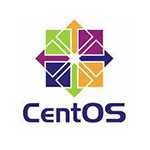I need to be able to pass some parameters to my virtual machine during it’s bootup so it sets itself properly. To do that I either have to bake the info into the image or somehow pass it as parameters to my qemu-kvm command. These parameters are just few, and if it was VMware, we would just pass it as ova paramas and when the VM launches we would call the ova-environment to get these params. But launching it from qemu-kvm I have no such options. I did some homework and found that I could use virtio-9p driver for sharing files across host and guest. Unfortuantely RHEL/Centos has decided not to support 9p.
With no option of rebuilding my RHEL kernel with the 9p options enabled, how do I solve my above problem? Either solution would work, which is, pass/share some kind of json file to the VM(pre-populated on the host), which will read this and do it’s setup OR set some kind of “environment variables” which I can query from within the VM to get these params and continue with setup. Any pointers would help.

 Question posted in
Question posted in 

4
Answers
When you boot your guest with
-kerneland-initrdyou should be able to pass environment variables with-append.The downside is that you have to keep track of your current kernel and initrd outside of your disk image.
Other possibilities could be a small prepared disk image (as you said) or via network/dhcp or a serial link into your guest or … this really depends on your environment.
I was just searching to see if this situation had improved and came across this question. Apparently it has not improved.
What I do is output my variable data to a temp file (eg.
/tmp/xxFoo). Usually I write text or a tar straight to that file then truncate it to a minimum size and 512 byte multiple like 64K otherwise the disk controller won’t configure it. Then the VM starts with a raw drive as that file. After the VM is started the temp file is deleted. From within the guest you can read/cat the raw block device and get the variable data (in BSD use thecpartition as the raw drive).In Windows guests it’s tricky to get to the data. In theory you can read
\.PhysicalDriveNbut I have not ever been able to get that to work. Cygwin can do it and it works like Linux. The other option is to make your temp file a partitioned and formatted image but that’s a pain to create and update.As far as sharing a folder I use Samba which works in just about anything. I usually use several instances of smbd running with different configurations.
If your version of QEMU supports it, you could use its
-fw_cfgoption to pass information to the guest. If that guest is running a Linux kernel withCONFIG_FW_CFG_SYSFSenabled, you will be able to read out the information from sysfs. An example:If you launch your VM like so:
From inside the guest, you can then get the value back from sysfs:
There appears to be some driver for Windows as well, but I’ve never used it.
One option is to create a ISO file and pass as parameter. This works for both host Win and Ubuntu and Guest Win and Ubuntu. You can read the mounted CD ROM inside the guest OS